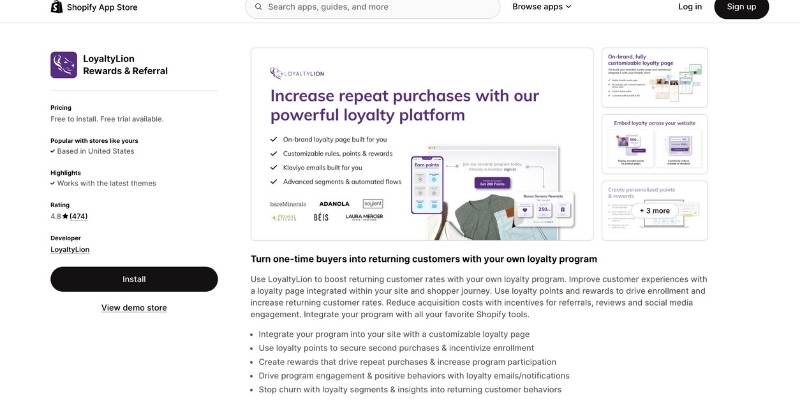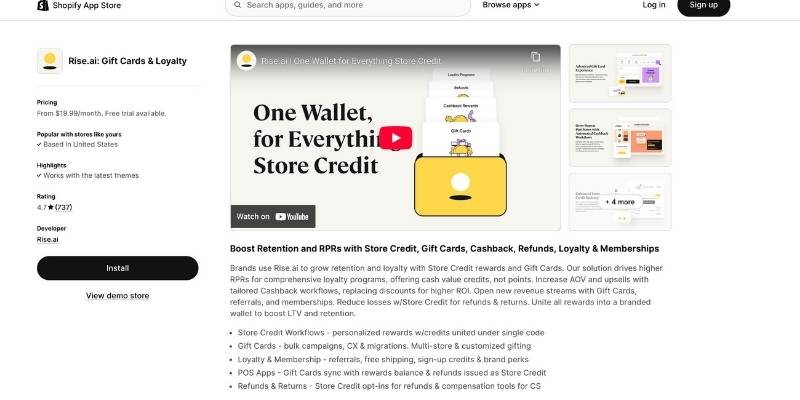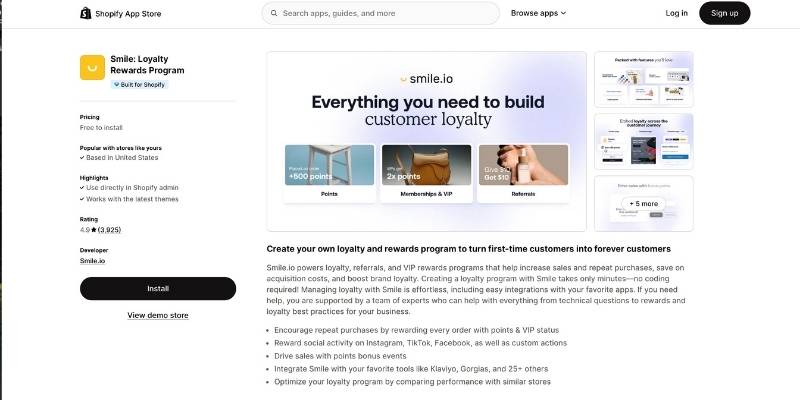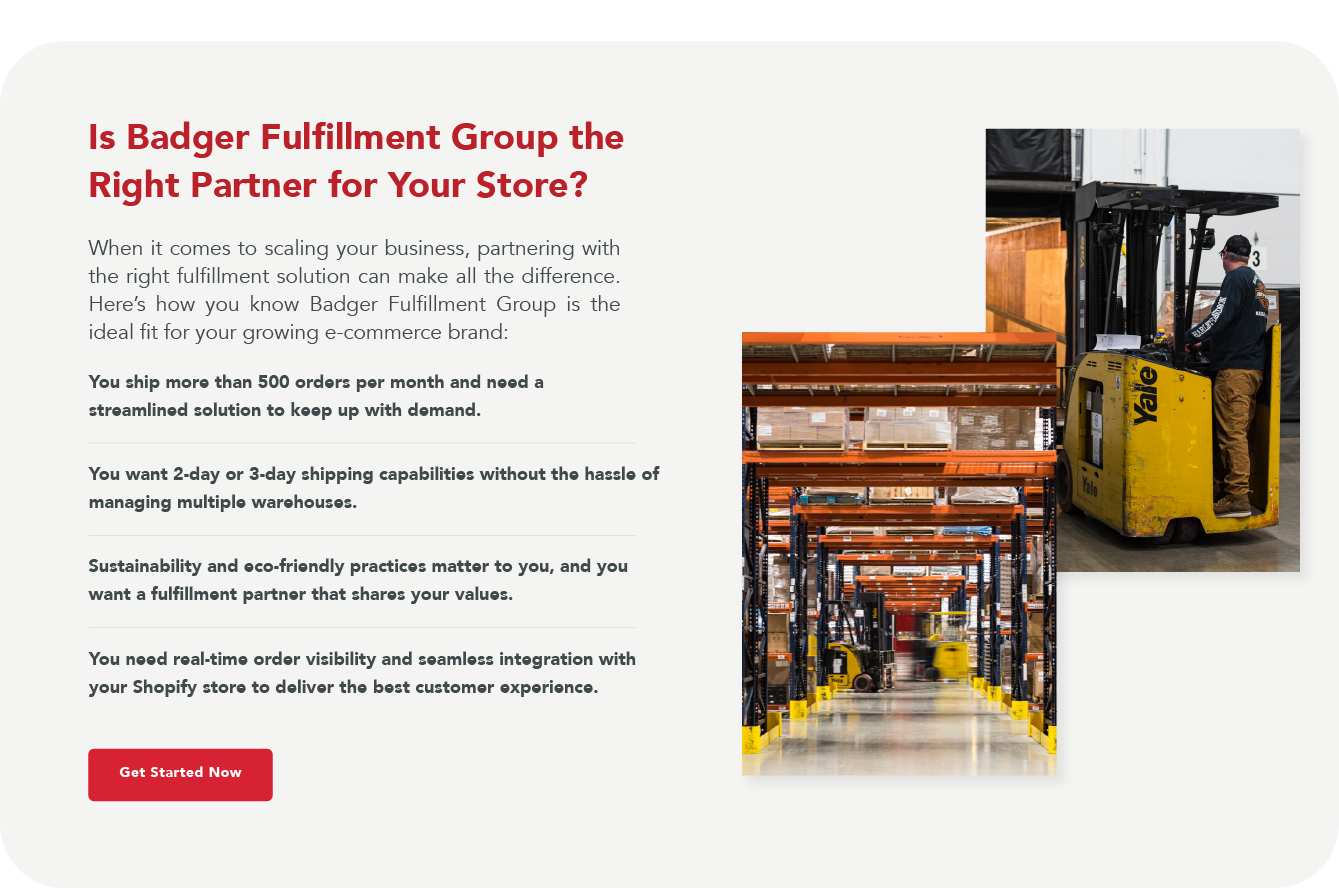Building long-term customer relationships is more than a talking point. It is one of the most reliable ways to drive predictable revenue and strengthen your position in changing markets. Loyalty programs work because they go beyond short-term promotions. Instead of focusing only on discounts, they create ongoing reasons for customers to return, spend more, and advocate for your brand. The right program not only increases retention but also boosts average order value and customer lifetime value. When fulfillment operations are aligned with that promise, you deliver a consistent experience that builds trust and turns repeat buyers into long-term brand advocates.
Understanding Loyalty Programs
A loyalty program is more than a reward system. At its core, it is a structured way to encourage repeat business by giving customers tangible or experiential value in return for their continued engagement. The concept is simple, but the impact reaches far beyond points or discounts.
Well-designed programs do three important things:
- Keep customers engaged with ongoing incentives such as points, tiered rewards, or exclusive access. Consistent rewards give shoppers reasons to come back and strengthen the habit of buying from the same brand rather than switching to a competitor.
- Provide valuable data that helps brands understand shopping behavior, which can shape marketing, product development, and fulfillment strategies. Every interaction in a loyalty program generates insights into what customers value most, allowing businesses to make smarter decisions that directly impact growth.
- Create personalized experiences by tailoring offers and communication to individual customer needs. When customers feel recognized and rewarded for their preferences, they are more likely to stay loyal and increase their lifetime value.
In today’s competitive market, loyalty programs have become a critical growth tool. They help businesses lower acquisition costs by maximizing the value of existing customers, increase retention by rewarding repeat purchases, and strengthen the brand relationship through consistent, customer-focused experiences.
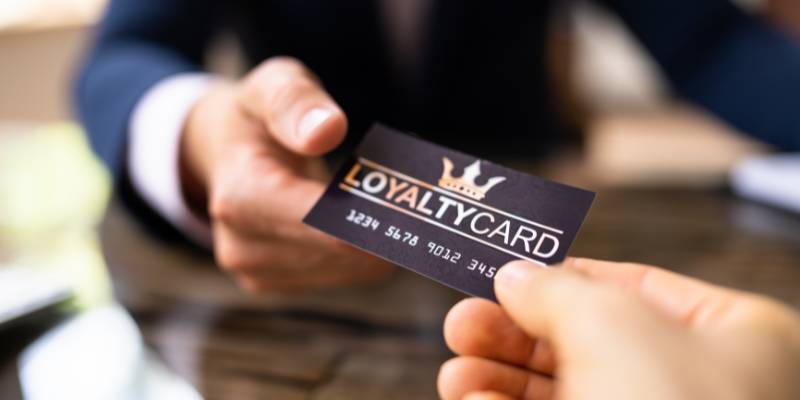
Benefits of Loyalty Programs
According to Zinrelo, 64% of loyalty program members spend more money to maximize points earnings and 59% of paid loyalty members are more likely to choose that brand over competitors. This shows how powerful loyalty programs can be in shaping customer behavior. By giving shoppers a reason to return, they reduce acquisition costs and increase retention, which directly impacts profitability. They also create opportunities for brands to collect first-party data, a growing priority as privacy changes make third-party data less reliable. Beyond sales, loyalty programs strengthen brand perception by showing customers that their continued business is valued. When customers feel recognized and rewarded, they are more likely to build an emotional connection that keeps them from exploring alternatives.
Here are the key benefits:
- Improves retention and reduces churn – Keeping an existing customer costs far less than acquiring a new one. Loyalty programs help maintain that connection.
- Increases customer lifetime value – Rewards encourage higher overall spending over the life of the relationship.
- Increases purchase frequency – Perks give customers more reasons to buy from you more often.
- Boosts average order values – Customers are more likely to add extra items to reach reward thresholds.
- Stops competing on price alone – A loyalty program shifts the focus to value and experience rather than discounting.
- Turns customers into brand advocates – Satisfied loyalty members often share their experiences and refer friends.
- Gathers additional customer data – Purchase patterns and engagement metrics help you improve offerings.
- Evens out seasonality – Incentives keep sales steady during slower months.
- Improves customer relations and communication – Loyalty members often opt in to hear from you, creating more touchpoints.
Types of Loyalty Programs
Loyalty programs are designed to strengthen the relationship between brands and their customers by providing rewards, incentives, or unique experiences in exchange for repeat business. While the end goal is always customer retention, the way a program is structured can significantly impact engagement and long-term success. Choosing the right program depends on factors such as product type, buying frequency, target audience, and overall business goals.
Here are the most common types of loyalty programs and how they work:
Points-Based Programs
This is the most widely used model. Customers earn points for each purchase, which can later be redeemed for discounts, free products, or other perks. The benefit is flexibility since points can be scaled to any reward level. For example, a skincare brand may offer 1 point per dollar spent, with 100 points redeemable for a $10 discount. This system works best for businesses with frequent, lower-cost purchases because customers see their progress build quickly.
Tiered Programs
A tiered system rewards customers based on their level of engagement or total spend, unlocking more valuable benefits as they move up. For instance, an apparel brand might offer free shipping to entry-level members, early access to sales for mid-tier customers, and exclusive products for top-tier members. This model incentivizes purchases while also creating a sense of exclusivity and motivating customers to reach the next level.
Paid or Subscription Programs
In this model, customers pay an upfront fee for ongoing benefits such as free shipping, exclusive discounts, or special services. Amazon Prime is the most well-known example, but many smaller brands use this structure successfully. The key is ensuring the perceived value outweighs the cost. Paid programs are especially effective when they simplify the customer experience or offer consistent savings for frequent buyers.
Cashback Programs
Cashback models provide direct monetary rewards for purchases, either as credits for future orders or as actual cash returns. For example, a pet supply company might offer 5 percent back on every purchase to be used on the next order. This type of program appeals to value-driven customers and provides an immediate, tangible incentive to come back.
Value-Based Programs
Instead of discounts or cash rewards, these programs align with customer values by donating a portion of purchases to charities or causes. For example, a sustainable clothing brand might plant a tree for every $50 spent. This approach resonates strongly with mission-driven shoppers and helps brands stand out in competitive markets.
Hybrid Programs
Many businesses combine elements of the above models to maximize impact. A hybrid program might offer points for purchases, tiers for higher-value customers, and value-based rewards like charitable donations. The advantage of this model is flexibility, but it requires careful planning to avoid confusion and keep the system easy to use.
The Role of Loyalty Programs in Economic Challenges
Loyalty becomes even more strategic when markets shift. With inflation, supply chain disruptions, and changes in buying habits, brands need reliable customer relationships. Zinrelo reports that 81% of customers are more likely to continue doing business with brands that offer loyalty programs, and 79% say loyalty programs make them more likely to stick with a brand during economic downturns.
By rewarding and connecting with existing customers, brands can stay stable and trusted. Programs also let brands adapt offers during tough seasons, keeping engagement high when competition is stiff.
How to Create a Loyalty Program
Creating a loyalty program is not just about adding rewards to your store. It requires a clear plan that connects customer expectations with your business goals. A successful program starts with understanding what motivates your audience, then designing rewards and processes that encourage repeat behavior without eroding margins. It also depends on operational alignment. Marketing, customer service, and fulfillment all play a role in making sure the program delivers on its promise. With that foundation in place, the steps to building a loyalty plan become more structured and measurable.
Here is a process you can use to create a loyalty program that works.
1. Define your goals – Are you aiming for repeat buys, bigger orders, or more engagement?
2. Choose your model – Subscription, points, tiered, or value-based?
3. Design rewards – Offer benefits customers truly find meaningful.
4. Set clear rules – Easy to join. Easy to redeem.
5. Integrate with systems – Make sure your loyalty platform syncs with your fulfillment systems for real-time updates.
6. Promote your program – Show it everywhere: site, cart, checkout, and email.
7. Monitor and refine – Watch data and evolve your program where needed.
Measuring the Success of Your Loyalty Program
Launching a loyalty program is only the beginning. To know if it is truly driving growth, you need to measure performance against clear benchmarks. Tracking success goes beyond counting sign-ups. The real value comes from monitoring how often members return, how much they spend, and how engaged they are with your brand compared to non-members. These insights not only show whether your program is working but also highlight where adjustments can improve results. By treating your loyalty program as a data-driven initiative, you can refine rewards, strengthen customer relationships, and increase long-term profitability.
Track these KPIs to see what works:
Repeat purchase rate – How often do members come back?
Average order value – Are members spending more per order?
Customer lifetime value – Is long-term spend increasing?
Engagement metrics – Track points earned, rewards redeemed, and email clicks.
Churn rate – How many members drop off over time?
Use insights to adjust thresholds, rewards, or targeting to keep the program performing.
Shopify’s Top-Rated Loyalty Program Apps
If you’re using Shopify, your loyalty program is only as strong as the systems supporting it. Apps that integrate seamlessly with your order and fulfillment data ensure every customer interaction is accurate and timely. This means rewards update as soon as an order is placed, redemptions happen without friction, and customers feel valued from checkout through delivery.
Smile.io
Smile.io is one of the most popular Shopify loyalty apps, with over 6,000 reviews and a 4.8-star rating. It offers straightforward tools for points-based rewards, VIP tiers, and referral programs, making it easy to build customer engagement without complexity. Because it syncs directly with fulfillment data, point balances are updated immediately after each purchase, which keeps customers confident that their rewards are accurate. This app is especially effective for small to mid-sized e-commerce brands looking for a flexible, entry-level solution that can grow as they scale.
LoyaltyLion
LoyaltyLion is well-regarded for its data-driven approach, with 400+ reviews and a 4.6-star rating. It provides advanced analytics and campaign management tools that allow brands to tailor rewards to individual customers. By pulling in detailed order history, the app personalizes offers and incentives, increasing the likelihood of repeat purchases. LoyaltyLion is best suited for growing and established Shopify stores that want to go beyond basic loyalty programs and use data insights to fine-tune their marketing and retention strategies.
Rise.ai
Rise.ai specializes in gift cards, store credits, and re-engagement campaigns, and holds a 4.7-star rating across 1,300+ reviews. The platform integrates with fulfillment systems to ensure credits are delivered quickly and usage is tracked accurately. Its strength lies in giving customers flexible value they can use over time, which is particularly useful for subscription-based businesses, high-ticket products, or brands that want to encourage reactivation of lapsed customers.
These tools help brands honor loyalty at every touchpoint, from checkout to unboxing, by connecting rewards seamlessly to fulfillment and customer experience.
Enhancing Customer Experience Through Order Fulfillment
Loyalty programs work best when fulfillment is just as thoughtful. Fast and accurate shipping builds trust. Branded packaging, samples, and unboxing touches are rewards in themselves. Returns should be easy and your support team responsive. When rewards align with fulfillment actions, each delivery reinforces why customers stay loyal. Badger’s offering of kitting, custom packaging, and 24-hour receiving gives brands a solid foundation for this.
Loyalty programs and fulfillment each carry value. Together, they build customer relationships that last. Loyalty invites them in. Fulfillment helps you keep them coming back.
Additional Resources on E-Commerce Fulfillment and Customer Loyalty
To further explore the role of fulfillment in enhancing customer loyalty and driving repeat purchases, consider these related articles and resources:
The Importance of Scalable Fulfillment Solutions for Growing Businesses
This blog discusses how scalable fulfillment strategies are essential for managing increased demand, which is crucial for maintaining customer satisfaction and loyalty as your business grows.
Revitalizing E-Commerce Sales Post-Holidays
Learn strategies to keep customers engaged and encourage repeat purchases after the holiday season, with a focus on effective fulfillment practices that support customer retention.
Dollars and Cents in Order Fulfillment
This article explores the costs associated with order fulfillment and how managing these costs effectively can enhance the customer experience, leading to increased loyalty and repeat business.
Knowledge Center: Order Fulfillment FAQs
Get answers to common questions about order fulfillment, including how it impacts customer satisfaction and loyalty, in this comprehensive FAQ section.
These resources will provide you with deeper insights into how effective fulfillment strategies can enhance customer loyalty, drive repeat purchases, and support overall e-commerce success.


